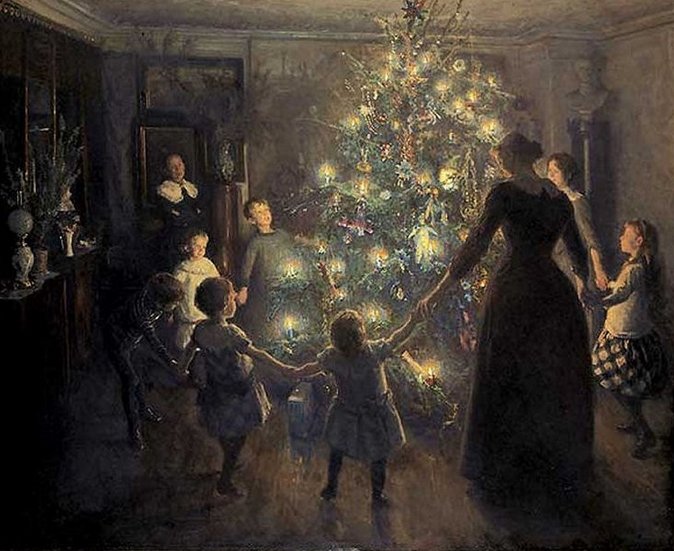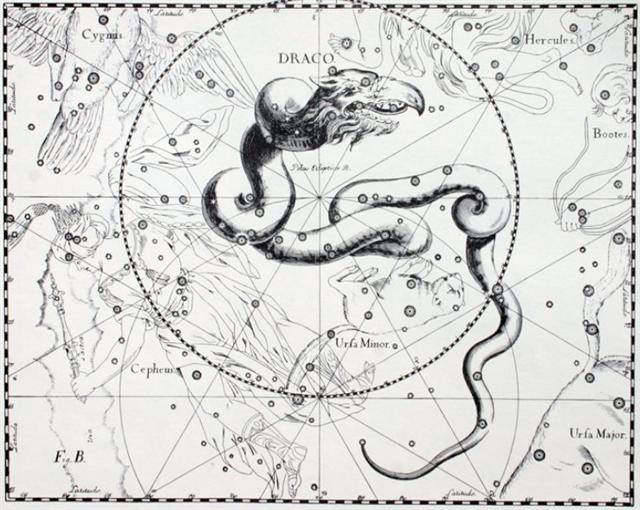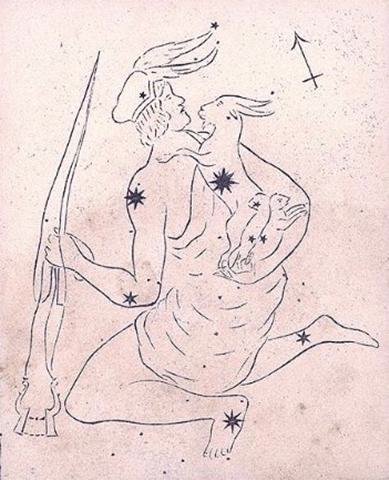There was a rakau type of glyph with a dot for the reader's attention 261 (= 9 * 29) days from the beginning of the C text, at a place where Metoro may have taken a deep breath to begin anew - there was a Capital letter at the beginning of his Tupu te toromiro:
 |
 |
 |
176 |
|
Ca4-1 |
Ca4-2
(78) |
Ca4-3 |
| kua
tupu te rakau |
kua tupu - te
kihikihi |
te
hau tea |
|
NODUS I
(260.0), π Herculis (260.7),
Ras Algethi (260.8) |
Sarin
(261.0), ο Ophiuchi (261.4)
Alrisha
|
ξ
Ophiuchi (262.2), θ Ophiuchi, ν Serpentis, ζ, ι
Apodis (262.4), ι Arae (262.8), ρ Herculis (262.9) |
|
December
6 (340) |
7 (*261
= 9 * 29) |
8 |
|
μ
AURIGAE,
μ
LEPORIS (77.6) |
ĸ Leporis (78.0),
RIGEL (78.1),
Flaming Star (78.2),
CAPELLA
(78.4), ο Columbae, τ Orionis (78.8)
Thuban
|
λ
AURIGAE (79.0),
λ
LEPORIS (79.6), ρ
Aurigae (79.7)
Arcturus
|
|
June 6
(157 = 314 / 2) |
7 |
8 |
|
3-14 |
oMARCH
15 |
16 |
17 |
18 |
19
(78) |
20 |
 |
 |
 |
 |
 |
 |
 |
|
Ca10-1
(256) |
Ca10-2 |
Ca10-3 |
Ca10-4 |
Ca10-5 |
Ca10-6
(9 * 29) |
Ca10-7 |
|
Erua inoino |
kua
hua te vai |
te
kiore - te inoino |
kua
oho te rima kua kai - ihe nuku hoi |
Tupu te toromiro |
kua
noho te vai |
|
π¹
Orionis (73.0), ο² Orionis (73.4),
HASSALEH
(73.6), π6 Orionis (73.9) |
ALMAAZ
(74.7),
HAEDUS I
(74.8) |
HAEDUS
II
(75.9) |
5h
(76.1) |
μ
AURIGAE,
μ
LEPORIS
(77.6) |
ĸ
Leporis (78.0),
RIGEL
(78.1), Flaming Star (78.2),
CAPELLA
(78.4), ο Columbae, τ Orionis (78.8)
Thuban
|
λ
AURIGAE
(79.0),
λ
LEPORIS
(79.6), ρ Aurigae (79.7)
Arcturus
|
|
ε
Leporis (76.0),
CURSA
(76.4), λ Eridani (76.7) |
|
2 (153 =
9 * 17) |
June 3 |
4 |
5 |
6 (157) |
7 |
8 |
|
NAKSHATRA
DATES: |
|
13 (16 * 16) |
oSEPTEMBER
14 |
15 |
16 |
17 |
18 (261) |
19 |
|
κ
Ophiuchi (256.2), ζ Arae (256.5), ε Arae (256.8),
Cujam (256.9) |
no star
listed (257) |
17h
(258.7) |
Mula-19 |
NODUS I
(260.0), π Herculis (260.7), Ras Algethi (260.8) |
Sarin (261.0), ο
Ophiuchi (261.4)
Alrisha
|
ξ Ophiuchi (262.2), θ
Ophiuchi, ν Serpentis, ζ, ι Apodis (262.4), ι Arae
(262.8), ρ Herculis (262.9) |
|
no star
listed (258) |
Sabik
(259.7), η
SCORPII (259.9) |
|
2 (336 =
14 * 24) |
December 3 |
4 |
5 |
6 |
7 (*261
= 9 * 29) |
8 |
This was half a year later than the
kihikihi place (261 - 78 = 183) where north of the
equator a new
Tree could have begun to grow. 9 * 29 - 6 * 13 = 183.
Toromiro was the sacred Tree on Easter
Island, comparable to the northern Oak:

... The
toromiro wood was formerly the principal and
indispensable material for Easter Island wood carving. Due
to the general barrenness of the land at the time of the
European arrival, every scrap of drift wood was collected
too, but whenever toromiro was available it was
preferred for all wooden artifacts, from personal ornaments
and images to house frames, canoes and paddles.
The demand for this wood among the natives was so great that
the forests in more recent generations have been rapidly
vanishing, and partly substituted by the imported miro
tahiti... Some of the keenest local wood carvers had old
chunks of toromiro wood hoarded in their personal
hiding-places, and a fair size root was brought from a cave
and presented to the writer as a treasure ...
South of the equator
the midsummer month (December) had Rigel and Capella close
to the Full Moon. Christmas was approaching and a new Tree of
Light would reveal itself.

 |
159 |
 |
130 |
 |
 |
4 |
 |
|
Ca4-25 (101) |
Ca10-6
(261) |
*Ca14-29
(392) |
Cb1-1 |
Cb1-6
(398) |
|
December
30 (364) |
June 7
(524) |
October
16 (655) |
17 (290) |
October
22 (295) |
|
Φ
SAGITTARII |
RIGEL /
CAPELLA
|
no star
listed |
MUPHRID |
ARCTURUS |
|
June 30
(181) |
December
6 (341) |
April 16
(472) |
17 (107) |
April 22
(112) |
|
SIRIUS |
ALRISHA |
POLARIS |
SHERATAN |
ξ¹ CETI |
Rakau toromiro, 20 * 13 = 260 days after Ca1-1,
was drawn smaller than rakau te pou 160 days earlier:
 |
159 |
 |
|
Ca4-25 (101) |
Ca10-6
(261) |
|
284 |
444 (78) |
In this respect it resembled rakau in Ca4-13 - where
we could count 413 / 7 = 59. And 9 * 29 (as in
oSEPTEMBER
29) = 261 (cfr Ca10-6). And 272 = 2 * 136.
|
(92 * 9 = 414 * 2) |
oSEPTEMBER
30 (273) |
oOCTOBER
1 |
2 |
 |
 |
 |
 |
|
Ca4-13 |
Ca4-14 |
Ca4-15 |
Ca4-16 (92) |
|
kua tuu tona mea |
te henua |
te hau tea |
mauga hua - te henua |
|
ζ
Serpentis (272.4), τ Ophiuchi (272.9) |
Winnowing Basket-7 |
Zhōngshān (274.0), π Pavonis (274.6) |
ι
Pavonis (275.1),
Polis
(275.9)
Menkar
|
|
18h
(273.4) |
|
NASH
(273.7), θ Arae (273.8) |
|
December 18 |
19 |
20 |
SOLSTICE (355) |
|
NAKSHATRA
DATES: |
|
oMARCH
29 (*8) |
30 |
oAPRIL
1 (91) |
2 |
|
η Leporis (89.0),
PRAJA-PĀTI, MENKALINAN, MAHASHIM, γ COLUMBAE
(89.3), η
Columbae (89.7) |
μ Orionis (90.3), χ²
Orionis (90.5) |
6h
(91.3) |
ξ Orionis (92.5) |
|
ν Orionis (91.4), θ
Columbae (91.5), π Columbae (91.6) |
|
June 18 |
19 |
20 |
SOLSTICE (172) |
|
Mea
1. Tonsil, gill (of fish). 2. Red
(probably because it is the colour of gills);
light red, rose; also meamea. 3. To grow
or to exist in abundance in a place or around a
place: ku-mea-á te maîka, bananas grow in
abundance (in this place); ku-mea-á te ka,
there is plenty of fish (in a stretch of the
coast or the sea); ku-mea-á te tai, the
tide is low and the sea completely calm (good
for fishing); mau mea, abundance. Vanaga.
1. Red;
ata mea,
the dawn. Meamea,
red, ruddy, rubricund, scarlet, vermilion,
yellow; ariga
meamea, florid;
kahu meamea
purple; moni
meamea, gold;
hanuanua meamea,
rainbow; pua ei
meamea, to make yellow.
Hakameamea,
to redden, to make yellow. PS Ta.:
mea,
red. Sa.: memea,
yellowish brown, sere. To.:
memea,
drab. Fu.: mea,
blond, yellowish, red, chestnut. 2. A thing, an
object, elements (mee);
e mea,
circumstance;
mea ke, differently, excepted, save,
but; ra mea,
to belong; mea
rakerake, assault;
ko mea,
such a one; a
mea nei, this;
a mea ka,
during; a mea,
then; no te mea,
because, since, seeing that;
na te mea,
since; a mea era,
that; ko mea
tera, however, but.
Hakamea,
to prepare, to make ready. P Pau., Mgv., Mq.,
Ta.: mea,
a thing. 3. In order that, for. Mgv.:
mea,
because, on account of, seeing that, since. Mq.:
mea,
for. 4. An individual;
tagata mea,
tagata mee,
an individual. Mgv.:
mea,
an individual, such a one. Mq., Ta.:
mea,
such a one. 5. Necessary, urgent;
e mea ka,
must needs be, necessary;
e mea,
urgent. 6. Manners, customs. 7. Mgv.:
ako-mea,
a red fish. 8. Ta.:
mea, to do. Mq.:
mea,
id. Sa.: mea,
id. Mao.: mea,
id. Churchill. |
Perhaps side a of the tablet referred
to the season when the Sun was north of the equator and
its side b to the season when the Sun was south of the
equator. There was a June tree at heliacal Capella
but in December the Sun would have been at the Serpent's Couch.

At the time of the Goat heliacal Capella
had been rising with the Sun at the northern spring
equinox and the Serpent's Couch had been at autumn
equinox. When Thuban (α
Draconis) was culminating at midnight it may have been
interpreted as a sign for the northern spring equinox.
In rongorongo
times this tree was in June but it had not yet moved all
the way to midsummer. Its beginning seems to have been
at heliacal Hassaleh, ι Aurigae, at his left foot (in
June 3):
 

At the time of
Elnath (β Tauri = γ Aurigae) Hassaleh would have risen
in oMARCH
14 (73), a point (tara) seemingly still remembered because of
3-14.

Ca10-1 was glyph
256 = 16 * 16, as if suggesting not only those 16 days
in waiting before a heliacal star would rise into
visibility again but a much stronger place of the same general
kind.
Notably the G tablet had 16 glyph lines before time zero
and Ga1-1.
Ca10-6 (Rakau
Toromiro) came 5 days later and it ought to belong in
the same ancient era as Elnath. Whereas rakau in
Ca4-13 should have pointed at the current midsummer:
|
oSEPTEMBER
29 (272) |
171 |
oMARCH
19 (78) |
 |
 |
|
Ca4-13 (89) |
Ca10-6
(261) |
|
272 |
444 (78) |
|
December 18 (352) |
June 7
(158) |
|
June 18
(169) |
December
6 (341) |
*272 (December 18) +
172 (alluding to June 21) = *78 (June 7).
|













